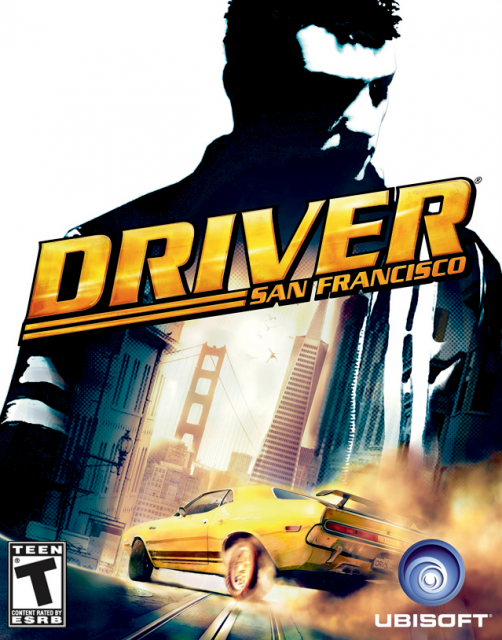A novel concept revitalises a franchise
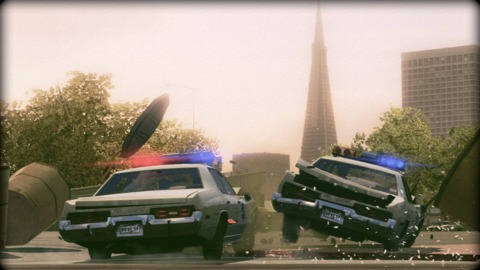
After the abysmal and controversial Driver 3, Ubisoft Reflections’ high-speed Driver series took a drastic fall from the gaming limelight. Its stylish world of brutish muscle cars, Bullitt inspired car chases and emphasis on unadulterated 70s style driving went from being a jewel of the PlayStation era to a distant, forgettable, and often painful memory. Driver 3 dragged the once-popular series through the mud and grime and rendered it virtually beyond repair; transforming it into a series in desperate need of redemption, requiring a spark of ingenuity to free it from the abyss like a thunderous V12 engine.
Enter Driver: San Francisco, a game that might just provide that imperative piece of dexterity the series so desperately needs.
Forget all about high-speed engines and high-concept cars, Driver: San Francisco offers a high-concept premise; a single gameplay mechanic that breathes new life into the series and introduces a completely novel way to play - particularly in the driving genre.
Its name: shift. Its purpose: to let you drive almost any car in the city. Simple, right? Wrong. Because you’re not just getting into these vehicles like any regular person, you’re travelling out-of-body, able to ‘possess’ other drivers in the blink of an eye. See a car you want on the opposite side of the road? You can have it. With the press of a button you’ll be flying high above the city of San Francisco, able to shift into any other vehicle you see fit and take it for a spin. It’s completely ludicrous, especially for a series that has always been grounded in some sort of reality, but it works. And all of this absurdity is justified in Driver: San Francisco’s story.
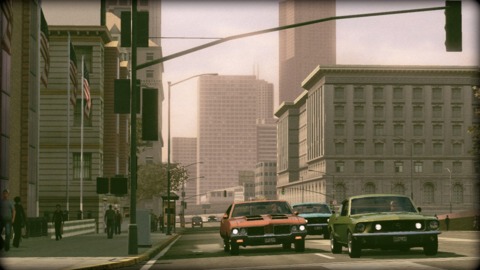
Once again you’re placed into the capable driving gloves of Detective John Tanner. His arch-nemesis Jericho is in custody and being transported via prison van when, after some ridiculous events involving a news chopper and an RPG, he breaks free and attempts to make a break for it. Tanner, being the elite driver he is, takes off in pursuit, but things don’t go so well and he ends up in a coma after a rather unfortunate collision. From here things get weird as Tanner wakes up and discovers his newfound shifting powers. He thinks this is all reality, despite the fact it’s all taking place inside his comatose head, so it’s a lot of fun seeing him freak out as he tries to come to terms with these unique powers, particularly when he attempts to explain it all to his partner. Seeing these characters talk about this premise just ups the ante on how outlandish it all is, but you have to commend the narrative for rolling with it in its own screwball fashion.
The whole thing feels like a cheesy basic cable TV show. It’s incredibly tongue-in-cheek and the dialogue is fairly enjoyable without ever really being particularly good. The rapport between Tanner and his partner Jones successfully captures that buddy-cop show dynamic with aplomb, mixing it with the 70s styling that dominated the earlier games in the series - with some help from the excellent soundtrack. Driver: San Francisco’s music is a 70s-infused cacophony of new and old, from Aretha Franklin and The Heavy through to Seasick Steve and Queens of the Stone Age; it’s a fantastic mix of superb music that perfectly fits the game’s tone. And it complements a narrative that, despite its flaws, is surprisingly one of the game’s strong suits. Seeing how the coma factors into real world events is a consistently exciting mystery, and the end of the game hits some interesting and satisfying beats, even if it’s slightly predictable.
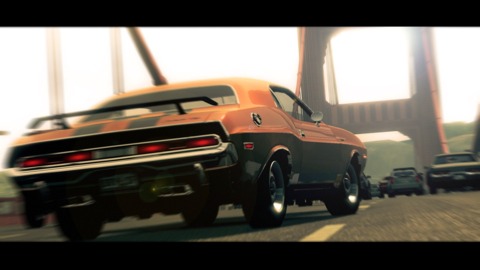
And it all plays into the gameplay as well. Tanner believes that the only way to get anywhere with Jericho is to first help the various citizens of San Francisco. Since he can shift into any vehicle and inhabit the body of the driver without their passenger realising – ala Quantum Leap – he can use his driving ability to get them out of sticky situations. These manifest in a variety of ways but they all adhere to fairly common driving game mission design. In one instance you’ll inhabit the body of a wannabe street racer and his cousin. At first they’re doing it just to raise money to pay for college tuition but since they’re so good at it – thanks to Tanner – they eventually get in way over their heads with some very bad people. It’s a mini story-arc within the main narrative, and Driver: San Francisco is full of them as you’re constantly meeting new characters and revisiting old ones, seeing where your meddling has taken them next. They’re a lot of fun and are surprisingly funny, with Tanner throwing in plenty of amusing quips as the passengers find themselves bewildered with their friend’s sudden transition in personality and driving ability.
Even shifting into random vehicles away from any missions produces enjoyable results. It would be accurate to call them skits as you engage with random characters in the name of comedic dialogue. At one point shifting into a car dropped Tanner into an argument between a married couple, but as the driving got more intense, fast and crazy, the wife began getting rather… frisky, moaning in joy at her ‘husbands’ dangerous driving. It was an odd occurrence, but it showcases one entertaining and unexpected function of the shift mechanic.
Of course, once you get into the main missions it takes on a more important function. Though it’s perhaps one of the multitude of side missions that best demonstrates shift’s premise, simply asking you to finish a race in both first and second place. While you’re driving one car the other will be controlled by the AI, so if it starts to fall behind you can easily shift into it and catch up, swapping your time between two different vehicles practically at once. It’s an astonishingly unique way to play a driving game, and it keeps the seven to eight hour story mode feeling fresh throughout, changing up what would otherwise be fairly standard mission design.
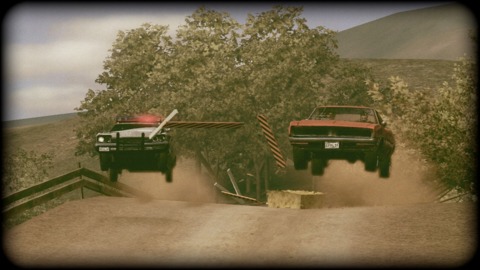
And it works in other ways too. Say, for instance, you’re in pursuit of a suspect. Rather than using your own car to batter them off the road, you can shift into an oncoming vehicle, using it to plough into your target headfirst. It’s all amazingly intuitive, going from vehicle to a bird’s eye view of the city in an instant, and all the way back again. It’s seriously impressive tech, particularly when you factor in the silky smooth 60fps it manages once you’re behind the wheel of a car, generating a fantastic sense of speed and fast-paced action.
Unfortunately, by design, the driving isn’t always up to snuff. It sticks closely to the 70s cop show tone, introducing plenty of over-steer as each vehicle’s backend has a tendency to slide around corners. This does create its fair share of cinematic moments, but it also lends itself to plenty of frustration as you constantly lose control of your vehicle, wildly veering from one end of the spectrum to the other in a matter of moments. There can be no arguments placed against the feet of this open-world incarnation of San Francisco, however. Its winding roads and extreme hills provide the backdrop for some crazy driving shenanigans, and its mixture of a sprawling metropolis and the more natural styling’s of Marin County on the other side of the Golden Gate Bridge illustrates its diversity. Praise must also be lavished on an impressive draw distance that allows you to drive to San Fran’s highest point and glance at the whole 200-square kilometres of this digital city.

Though once you’re back down to sea level Driver: San Francisco also has its own comprehensive multiplayer suite as well. Once again it takes familiar themes and applies the shift mechanic to shake them up. A quick game of Tag becomes fundamentally more hectic as everyone has access to shift, utilising other cars as battering rams to gain an advantage. Another mode sees a group of cops chase down one lone runner, with the cops able to use the battering ram technique to incite fear and paranoia in the runner. You have to be constantly on your toes because at any moment the traffic can turn against you, providing endless thrills and excitement. And if that’s not for you then you can also take part in straight up races, where shift is abandoned for regular, skill based driving.
And for a game all about the act of driving, Driver: San Francisco and its shift mechanic certainly breathes life into proceedings. It’s an undeniably successful and novel concept, and the way the story rolls with the absurdity is as refreshing as the mechanic itself. Simply put, it’s consistently fun, never taking itself too seriously, and instead focusing on how enjoyable the act of driving can be when you throw in a supernatural curveball. Seeing where shift can go from here is an exciting prospect, and the fact those words are associated with Driver just goes to show how superlative the mechanic is.
